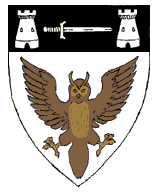
|
Master Timotheus Zacharia von Schloss Zwilling | 
|

|
Master Timotheus Zacharia von Schloss Zwilling | 
|
Bobbin lace has two moves ... that's it ... TWO MOVES. Using supplies you probably have at home, you'll learn those two moves and how to combine them into stitches to make LACE!
To play along at home you'll need to assemble some items:What You Need For ClassClass Handouts | Make a Pillow & Attach Pattern | Pins | Thread | Bobbins
Questions? Comments? Whatever? EmailWhat You Need
Get Ready For ClassIf that sentence makes no sense to you, don't worry just keep reading, details can be found in the sections below. At this point you are all ready for the class! |
 |


You'll also need to refer to page 5 and the instructions on page 8.
|
Bobbin lace is made on a "pillow". The pillow holds the pattern (pricking) and keeps the
pins you place (to hold the thread crossings in place) firm and steady.
You need something firm that will allow you to easly place the pins and keep them in place. My suggestion is a throw pillow wrapped in a bath towel. Any shape pillow that fits your reach is fine. A couple of layers or more of towel should hold the pins in place. For more suggestions, check out Bobbin lace with cheap tools from Katherina Weyssin |
 |
|
Attach the pattern (pricking) to the top center of your pillow. Push the pins down flush with
the paper so that they don't stick up where your threads can get caught in them.
If you have problems pushing the pins all the way down, I find that the end of a pen helps!
|
 
|
The crochet cotton will also be smooth enough to make a nice lace, but not slippery and difficult to work with.
Embroidery floss will work as well. Use 2 or 3 strands of the floss per bobbin. Please use name brand floss, the inexpensive skeins are cheaply made and will make you unhappy.
Use at least 2 yards of thread per bobbin. Easiest is to cut a length of thread per bobbin,
wind it on, and then tie two bobbins together.
|
You'll need two types of pins for this project.
At least 30 Dressmaker pins -- the regular silver straight pins. They will be used to pin down the pattern (pricking) and to hold the thread crossings in place until they are stabilized. And at least 11 large head pins (1 3/4") to help hold your bobbins in place and seperate out bobbins you're not using at the moment. They are also handy for pinning your towel to your pillow.
|

|
I suggest wooden clothespins -- the kind that have a spring attached, not the kind you use to make dolls out of. You can get them online or order them for curbside pickup at Target and other such stores.
| Attach the thread to the bobbin with a slip knot | 
|
|
Wind the thread on the bobbin.
If you used the clothespin, grip the thread in the jaws of the clothespin to secure it. Otherwise secure the thread with a half-hitch (see page 3 of the class handout). |

|
|
Hanging the bobbins means attaching them to pins at the top of the pricking (pattern).
Page 3 of the class handout has details about hanging the bobbins. |

|
| To keep the bobbins in place in between uses, pin a piece of ribbon over the bobbins, pinning it down between each pair of bobbins. | 
|

|
We (Unicorn Fiber Arts) sell a Bobbin Lace kit that is set up and ready to use. It includes
the class handout and two additional patterns. It has real bobbins already warped up with
several yards of size 20 cotton thread. If you are local to North Hollywood, and want to do a safe doorstep pickup, we can knock $10 off the cost of the kit. Contact us at: |

|
Sales pages: Unicorn Fiber Arts * Brown Owl Brew Shop
Main page: House Zacharia